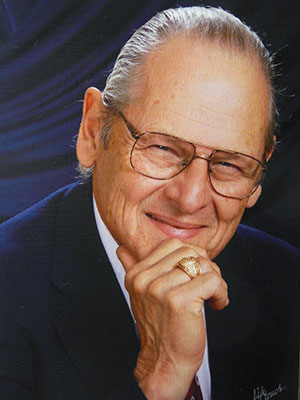
For over 37 years Ben Smith worked for Lockheed Martin and heritage companies in a variety of cutting edge technical capacities. Ben was known as an innovator and a go-to person for engineering development of new technologies and for solutions when technical problems arose or proposals were to be written. Mr. Smith earned B.S. and M.S. degrees in aerospace engineering at Texas A&M University in ’65 and ’66 and has maintained a strong allegiance to Texas A&M because of the opportunity for his education.
Mr. Smith was on the cutting edge of developing numerous technologies that are now considered commonplace. When the F-111 program came to a crisis in 1968 with static and fatigue failures, he developed techniques for the application of finite element analysis generally thought to be impossible. The techniques produced the first models of large structures, the first fine-grid models, and several new elements, e.g. quad and bolt elements.
Mr. Smith was also in on the ground floor of composite material development and application to aircraft. From 1973 through 1978, a graphite-epoxy and Kevlar-epoxy YF-16 forward fuselage
In 1979-1980 Mr. Smith led efforts that performed a detail structural investigation of graphite-epoxy swept-forward wings and the maintainability of composite structures. Both programs contributed to his transition into the world of stealth. In 1984 he received an Extraordinary Achievement Award for a related IR&D program that was awarded a perfect score of 10 by the Air Force.
From 1983 to retirement in 2004, Mr. Smith was technically assigned to the F-22 or one of its predecessor
In retirement, Mr. Smith and his wife, Deanna, an English teacher for almost 30 years, have continued their interest in students, student educational opportunities, and the Department of Aerospace Engineering at Texas A&M.